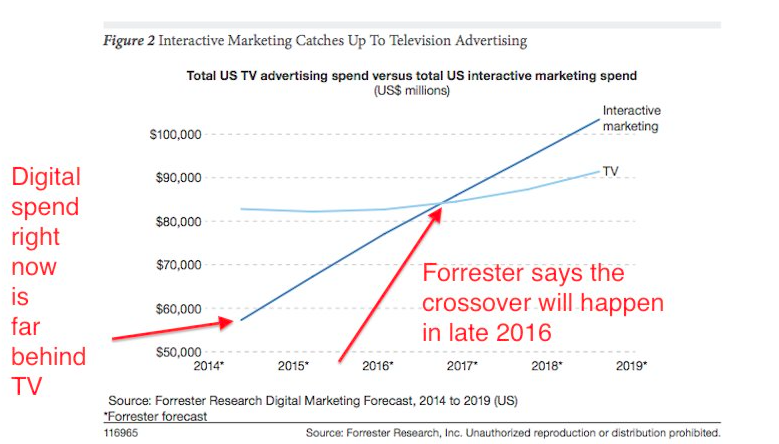"Don't worry about people stealing your ideas. If your ideas are any good, you'll have to ram them down people's throats." Howard Aiken
Apparently now is the time for prognosticating, so after a lot of contemplation and a three glasses of eggnog, here is what I see happening in 2015.
March. Mobile sites add more advertising inventory and drop content. By the time you read this the majority of web traffic will officially be mobile traffic. By March 6th, 2015, every one has frantically rebuilt their websites using responsive design, or at least they have added a mobile site to their digital mix in order to meet this change in consumer behavior. On March 7th, everyone realizes that while mobile site traffic is increasing exponentially, the average mobile site only has one 320x50 pixel ad per page. The average desktop site has 47 ad placements. So publishers immediately drop all content and replace it with advertisements in a frantic effort to make the 2015 sales budgets. "Thank goodness we caught this in time!", remarked one well known publisher.
Dateline May 10th... The Behavioral Targeting Riots start. Consumers have finally had enough of poorly executed behavioral targeting campaigns and take to the streets burning the buildings of the very companies implementing these campaigns. "At least the NSA follows me around in an unmarked van", cries one frustrated consumer. Fortunately each well designed splash page contains a Google Map making it easy to find these businesses. I still see targeted ads from a business I visited 1,056 days ago. And I only visited to get the address for a sales call.
July. We run out of Hashtags. As everyone continues to invent new hashtags in a never dying effort to "keep cool" and build site traffic, on July 27th, 2015 we finally run out of hashtags. #OutOfHashtags, #ThankGodWeAreOutofHashtags Looks like we are going to have to invest in writing actual content to get noticed.
September. New Social Media Site Laws Take Effect. On Monday September 7th, in an effort to stop drunk and regrettable postings on all social media sites, Congress passes legislation forcing the deletion of all social media content within 7 seconds of posting, including any references involving congressmen since Fanne Fox and Wilbur Mills's 1974 misunderstanding in the Washington D.C Tidal Basin.
Christmas 2015. New Ad Tag guarantees you will get credit for sales attribution. Don't know why I didn't think of this earlier. On November 23rd, a new ad tracking tag goes live. Its sole purpose is to rewrite all existing ad tags with its own code as soon as you visit a web site, guaranteeing your campaign/website/program will get credit for the sale.
Best wishes in the new year!
“When the whole world is silent, even one voice becomes powerful.” – Malala Yousafzai









